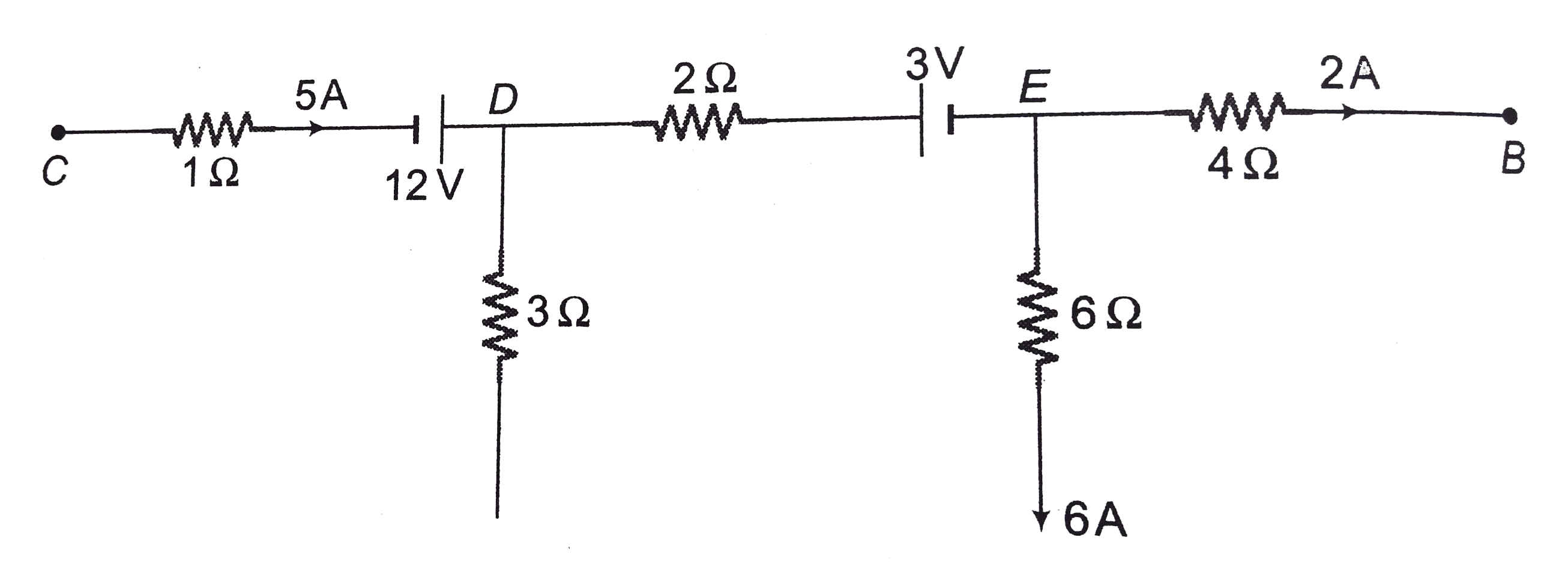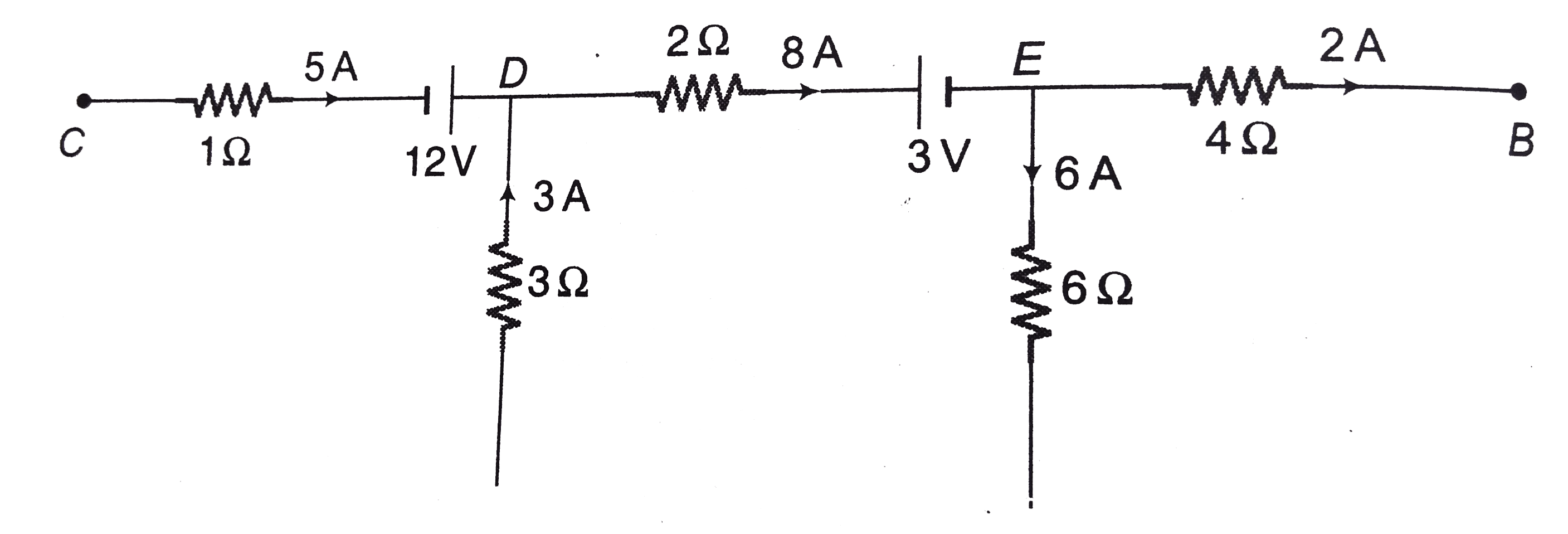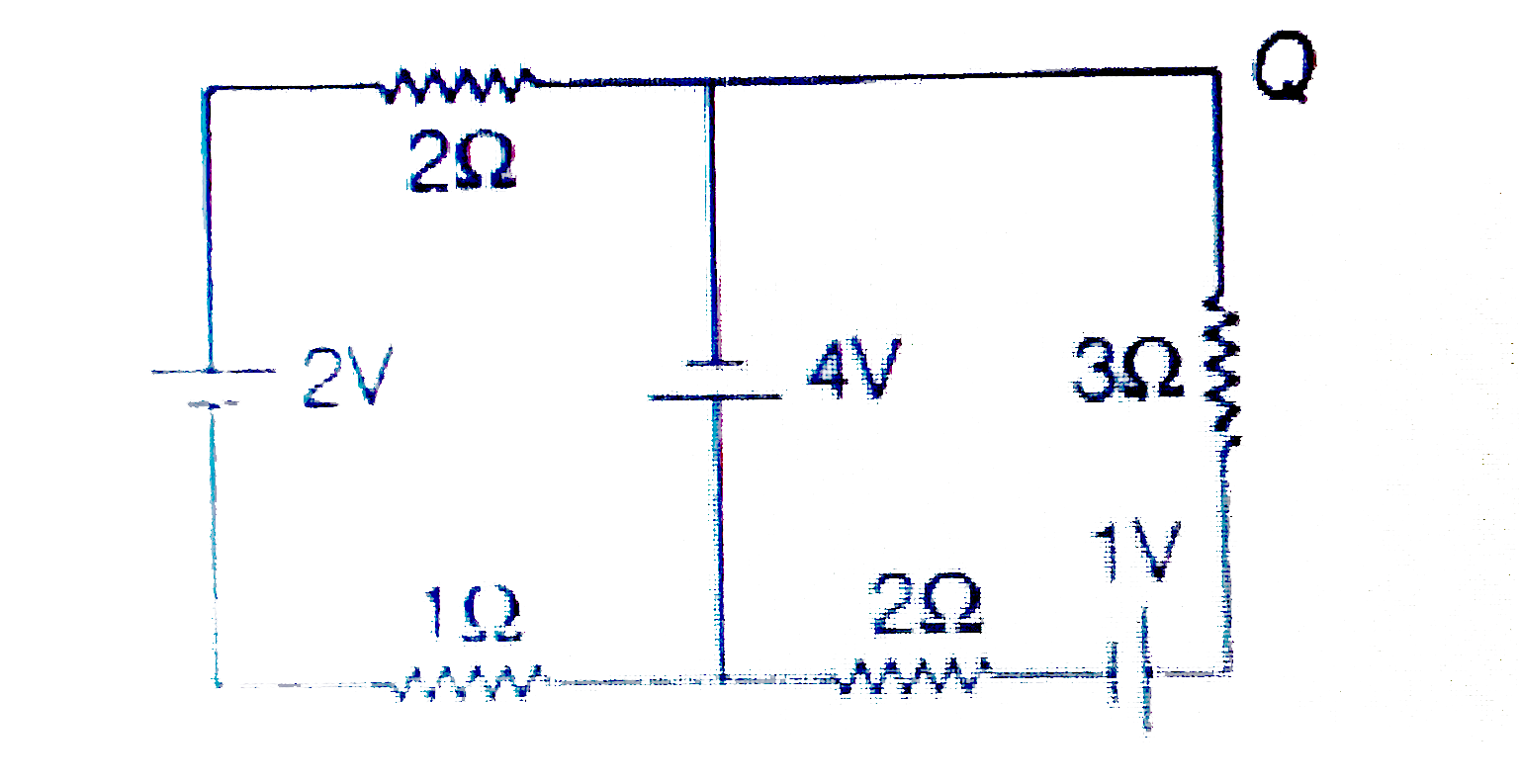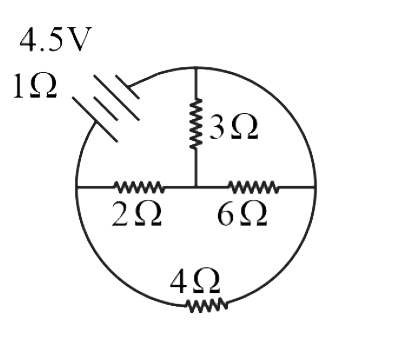 Figure shows the part of a circuit. Calculate the power dissipated in 3ohm resistance. What is the potential difference VC−VB?
Figure shows the part of a circuit. Calculate the power dissipated in 3ohm resistance. What is the potential difference VC−VB?
Applying Kirchhoff's junction law at E current in wire DE is 8A from D to E. Now further applying junction law at D, the current in 3Ω resistance will be 3A towards D.
Power dissipated in 3Ω resistance =i2R=(3)2(3)=27W

VC−VBVC−5×1+12−8×2−3−4×2=VB
∴VC−VB=5−12+16+3+8
VC−VB=20V
Topper's Solved these Questions
- BOOK - DC PANDEY ENGLISHCHAPTER - CURRENT ELECTRICITYEXERCISE - Exercise 23.16videos
CURRENT ELECTRICITY
- BOOK - DC PANDEY ENGLISHCHAPTER - CURRENT ELECTRICITYEXERCISE - Exercise 23.21videos
CURRENT ELECTRICITY
- BOOK - DC PANDEY ENGLISHCHAPTER - CURRENT ELECTRICITYEXERCISE - Example Type 61videos
CURRENT ELECTRICITY
- BOOK - DC PANDEY ENGLISHCHAPTER - COMMUNICATION SYSTEMEXERCISE - Subjective11videos
COMMUNICATION SYSTEM
- BOOK - DC PANDEY ENGLISHCHAPTER - ELECTROMAGNETIC INDUCTIONEXERCISE - Medical entrances gallery25videos
ELECTROMAGNETIC INDUCTION
Similar Questions
The figure shows part of certain circuit, find,

a. power dissipted in 5Ω resistance,
b.Potential difference VC−VB
c.Which battery is being charged?View SolutionIn the circuit shown, what is the potential different VPQ ?
 View Solution
View SolutionIn the circuit of figure, the current in 4Ω resistance is 1.2A , what is the potential difference between B and C?
 View Solution
View SolutionThe power dissipated (in watt) in 3Ω resistance in the following circuit is
 View Solution
View SolutionThe given circuit is the part of a certain circuit. The current through resistors are shown . The potential difference VP−VQ is
 View Solution
View SolutionWhen the current in the portion of the circuit shown in the figure is 2A and increasing at the rate of 1A/s,the measured potential difference Va−Vb=8V.However when the current is 2A and decreasing at the rate of 1A/s, the measured potential difference Va−Vb=4V.The values of R and L are:
 View Solution
View SolutionAn electric lamp of resistance 2Ω and a conductor of resistance 4Ωare connected to a
6V Battery as shown in the circuit. Calculate:
(a) the totak resistance of the circuit,
(b) the current through the circuit,
(c) the potential difference across the (i) electric lamp
and (ii) conductor, and
(d) power of the lamp.
 View Solution
View SolutionIn an AC circuit with voltage V and current I, the power dissipated is
View SolutionA rod resistor obeys non-linear relationship between V and l-according to I=√V/10 This rod is connected in series with a resistance to a 20 V battery of practically no resistance. Find this series resistance for the following cases
(a) the current in the circuit is 0.4 A.
(b) the power dissipated in the rod is twice that dissipated in the resistanceView SolutionThe current I through a rod of a certain metallic oxide is given by I=0.2V1/2 , where V is the potential difference cross it. The rod is connected in series with a resistance to a 6 volt battery of negligible internal resistance. What value should the series resistance have so that :
A) the current in the circuit is 0.4 A
B) the power dissipated in the rod is twice that dissipated in the resistance.View Solution

